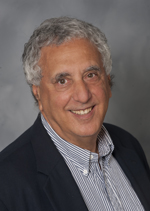By Donald H. Harrison

CORONADO, California – Over the weekend, I attended a recital featuring an organist, two trumpet players, and a soprano at the First Church of Christ Scientist in this San Diego suburb, allowing me to look around one of the many historic buildings in this metropolitan area designed by San Diego architect Irving Gill.
The occasion made me realize that there can be a strong symbiotic relationship between the performing arts and houses of worship.
Just as Tifereth Israel Synagogue in San Diego hosts a community orchestra, made up of Jewish and non-Jewish players, that draws from the community attendees who might not otherwise have ever stepped into a synagogue, so too did this recital draw to the Christian Science church people who otherwise would have had no reason to step inside.
I believe that the opportunities to come in and look around during musical performances helped to demystify Judaism and Christian Science for people who have had no exposure to either.
Concomitantly, by providing performing artists their sanctuaries or social halls as venues, houses of worship may inspire their congregants, either out of loyalty or curiosity, to attend the performances. This brings potential new supporters to the arts organizations.
The Tifereth Israel Community Orchestra performs in the social hall of the synagogue. As attendees come into the foyer, they see a set of paintings depicting the 12 tribes of Israel. They pass the doors of the sanctuary, which sometimes are open, allowing the visitors to look in. In the social hall itself, they see a large chandelier in the shape of a six-pointed Star of David. If they look through the side windows of the social hall, they can see a playground and the classrooms used by Tifereth Israel’s religious school. On either side of a stage located behind their seating, there are the flags of the United States and of Israel.
At the Christian Science Church, as the audience waited for the performance on Saturday afternoon, August 9, by the church’s organist Loren-James Clark, soprano Elyse Montano, and trumpets Dave Greeno and Steve Foster, their eyes could roam over the sanctuary. There were inscriptions on either side of the stage, one quoting Jesus, the other quoting Mary Baker Eddy, the founder of the religion.
On the left, Jesus’s quote read: “If ye continue in my word then are ye my disciples indeed and ye shall know the truth and the truth shall make you free.” On the right, Eddy’s said: “Christianity is again demonstrating the life that is truth and the truth that is life.” Near the stage was a display board with room for three numbers. These were 14, 18, and 29, which I later learned were the numbers of the hymns that were to be sung by the congregation at their upcoming service. Hymnals were located in racks on the back of the pews, of which there were eight rows, bisected by a center aisle.
There were small circular stained glass windows on either side of the sanctuary. On the left was a seven pointed star with the words in clockwise order reading “principle,” “mind,” “spirit,” “truth,” “love,” “life” and soul.” On the right was a picture of Jesus—whom I did not recognize because it was a beardless representation – sitting next to a table upon which was a book. In the right hand corner of the sanctuary stood an American flag.
The organ loft in the church at 1123 Eighth Street, Coronado, is situated above the left hand side of the sanctuary toward the back of the room. The audience faced the stage at the front of the sanctuary which, except when soloist Montano performed, was empty. For many in the audience the music came from their left sides or from behind them, and to watch the musicians meant shifting unnaturally in the pews. Therefore, for most of the recital, audience members stared straight ahead, looking at an empty stage.
At a punch and cookie reception afterwards on the patio, one of the members of the host committee agreed that the sanctuary’s configuration offered less than an ideal situation, but hoped that the music would nevertheless assure a pleasurable experience for visitors. Asked whether she anticipated people at concerts would be sufficiently intrigued to take home a piece of literature from the pews, she said she could not be certain as this was the first concert the church had offered.
I later asked David Amos, the conductor of the 75-piece Tifereth Israel Community Orchestra, about his experiences with non-Jews being exposed for the first time to the synagogue from which the orchestra leases the space at 6660 Cowles Mountain Boulevard.
Amos responded that when people go into a house of worship of a religion other than their own, they typically are a little ill at ease. They may ask themselves such questions as: Will any pressures be put upon them? Will they be appropriately dressed? Will they somehow inadvertently give offense?
“What we’ve succeeded in doing is to show them that it (Tifereth Israel) is a comfortable place,” said Amos. People who were a little nervous – be they members of the orchestra or of the audience – eventually come to feel far more relaxed. They greet the rabbi, become familiar with the office staff, and lose whatever inhibitions that they may have felt prior to their first encounter.
About the only novelty for orchestra members who snack during rehearsals is the issue of kashrut. The Conservative synagogue issues guidelines about what kind of foods may be brought inside and which cannot, Amos noted.
There is no data concerning whether or not the concerts prompt audience members to inquire about congregational membership, but what does seem evident is that people who enjoy music at these houses of worship are far less likely to be hostile to the host religions than are people who’ve never gone inside.
*
Harrison is editor of San Diego Jewish World. He may be contacted via donald.harrison@sdjewishworld.com